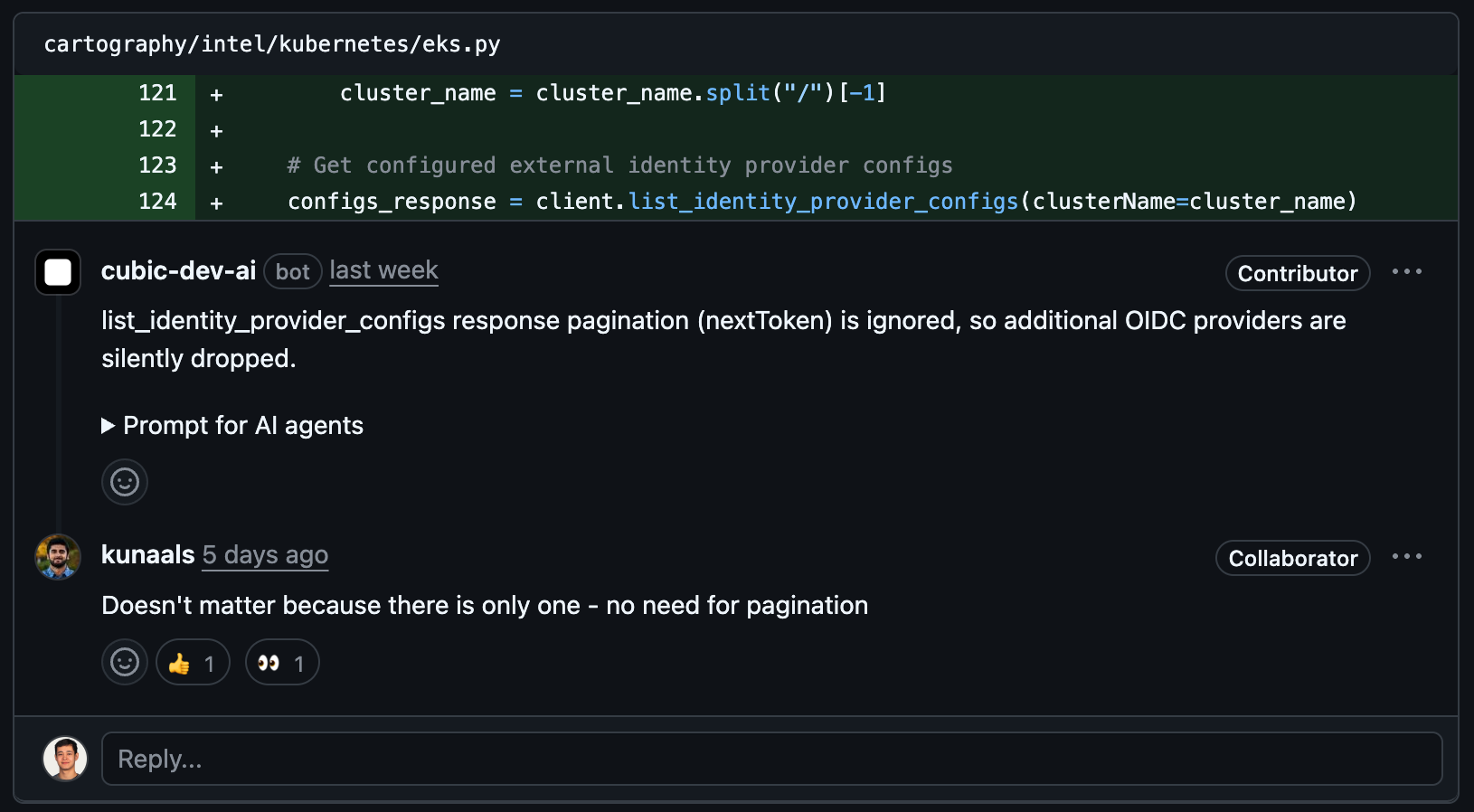Skip to main contentcubic learns your team’s unwritten rules from feedback team members provide in their replies to cubic’s comments.

How cubic learns
cubic automatically learns when you:
- Reply to its comments: Type a response explaining what cubic should do differently, and it remembers for next time
- Provide context in threads: Explain why something matters to your team, and cubic incorporates that knowledge
- React to suggestions: Thumbs up/down help cubic calibrate what’s useful vs noise for your specific codebase
What cubic remembers
- Team-specific patterns: “We always use early returns” or “Integration tests required for API endpoints”
- Technical constraints: “This library causes performance issues in our stack”
- Process requirements: “Check with platform team before modifying auth service”
Each learning is scoped to your team. Your feedback trains your instance of cubic, not everyone else’s.
Review and manage learnings
- Open AI review settings → Memory & Learning to browse everything cubic has learned, and to edit or delete learnings
- Search and filter by rule to pinpoint the guidance that matters to specific parts of your codebase
Privacy and control
- Explicit learning only: cubic only learns from feedback directly addressed to it in comments
- Team-scoped: Learnings never leak between different organizations or repositories
- Transparent history: View and manage all learnings in the AI review settings dashboard
